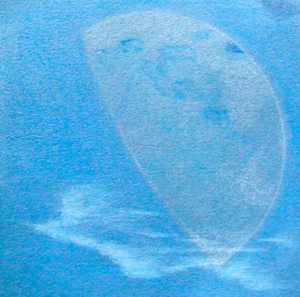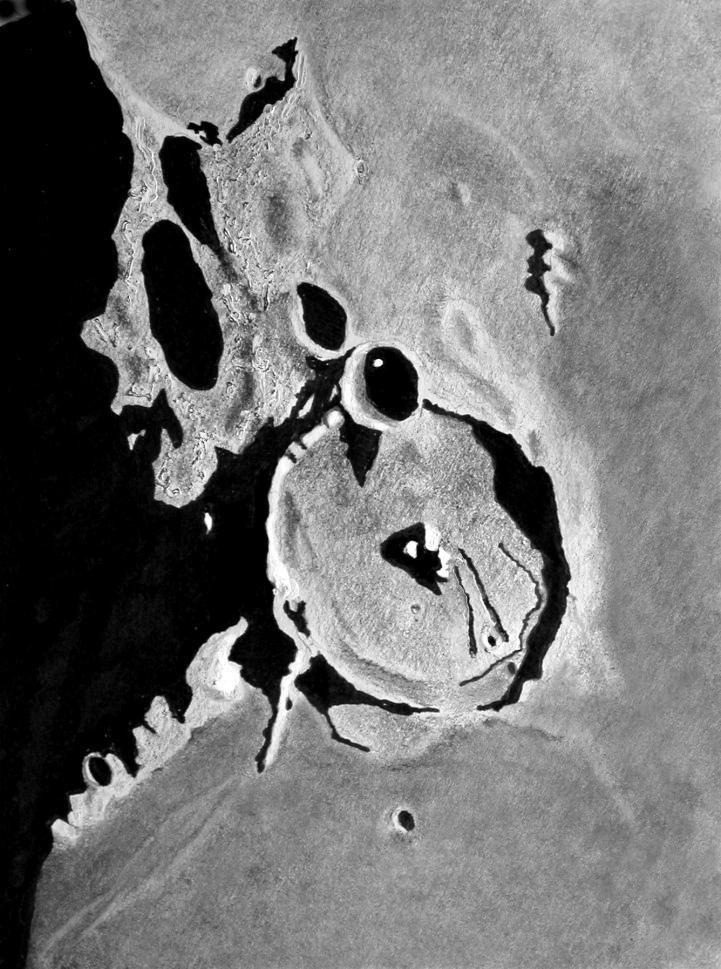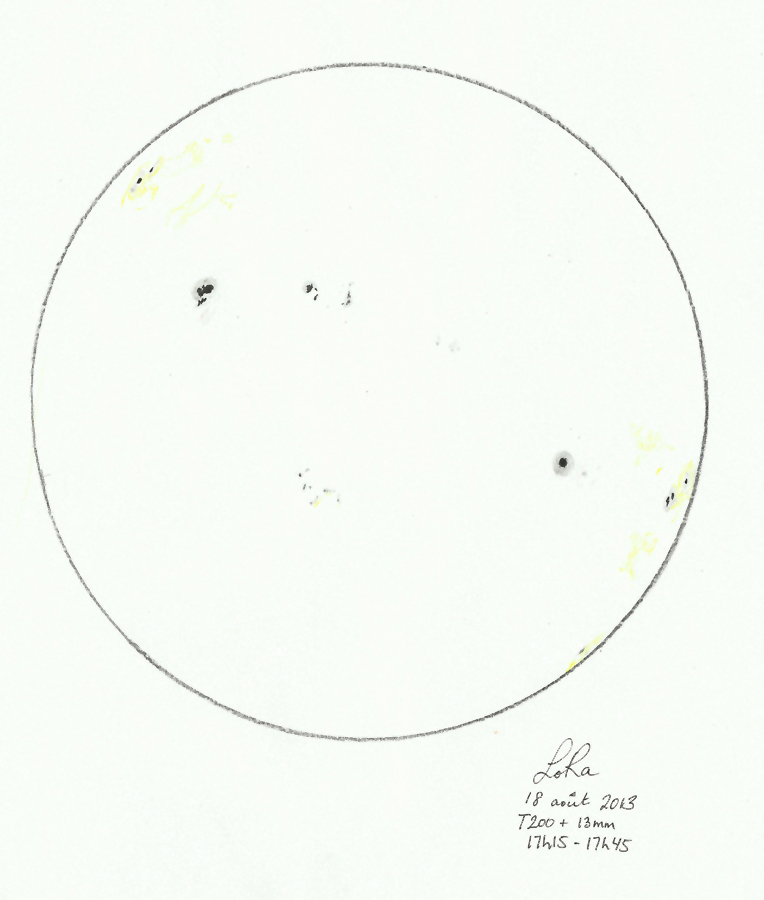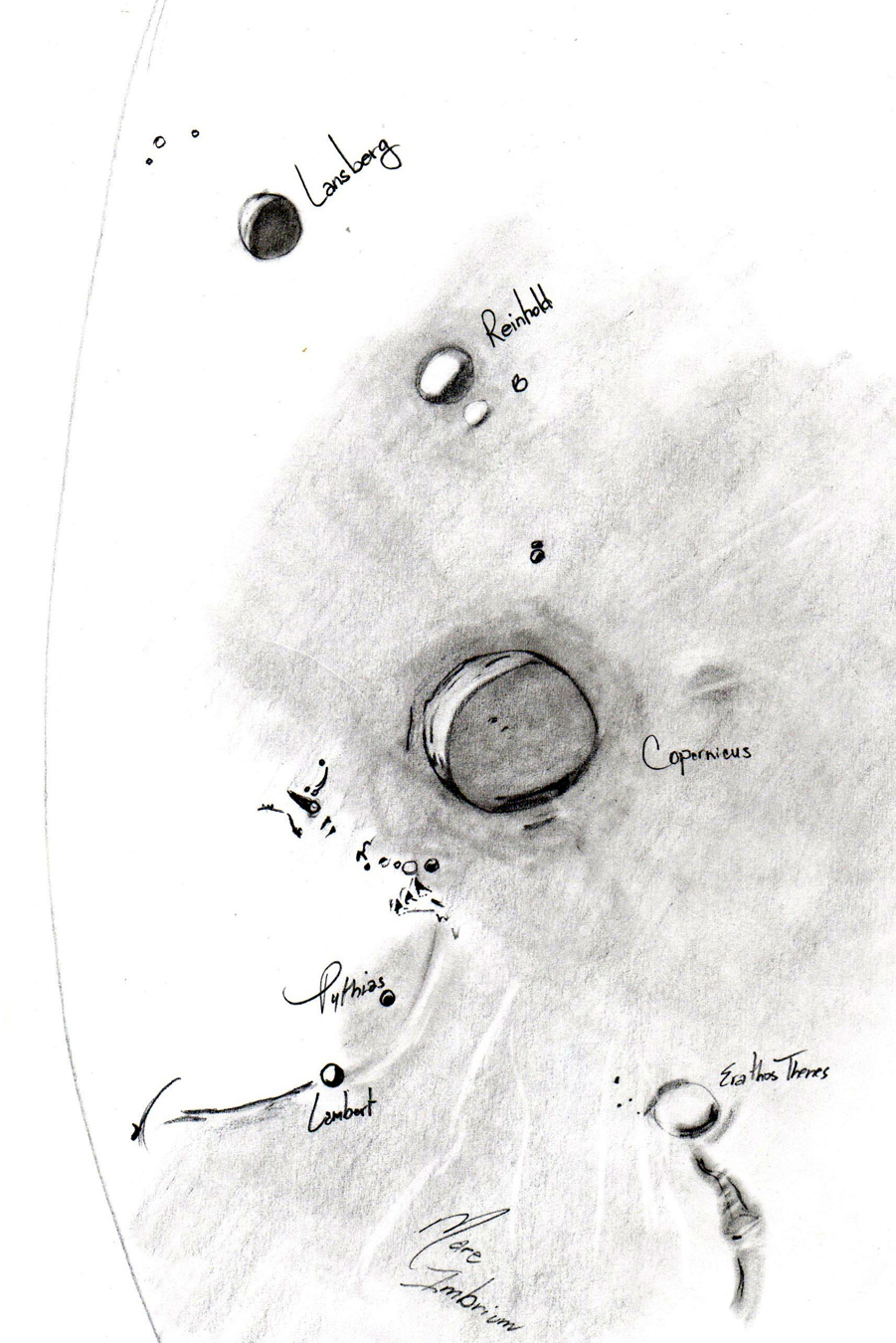This material is from the 2013 Summer Solstice to Autumn Equinox Contest.
There are four categories in this contest:
- A) celestial objects observed without optical aid (i.e., naked-eye);
- B) solar-system objects observed with optical aid (binoculars or telescope);
- C) deep-sky objects observed with optical aid (binoculars or telescope);
- D) original artworks based on visual observations of one or more celestial objects.
The rules for entry are:
- participation is open to all RASC members (except for the RASC Archivist, who is resigned to impartially administrating the contest);
- entries must be based on one or more observing sessions with the observer/artist at the actual eyepiece, or using her/his naked-eye if an unaided observation;
- to be eligible, the image(s) must be made anytime from 2013 June 21 to 2013 September 22;
- only entries executed in manual drawing media (e.g., not drawn with a stylus on a digital tablet) will be considered for categories A-C above. Digital drawing media as well as more traditional media may be used for category D. Due to bandwith restrictions we can’t accommodate performance art in entries for category D at this time, but we hope to be in a position to do so a subsequent contest. Entries in category D may display the observational material manipulated in any way the artist deems appropriate;
- specifications of the instrumentation used, and circumstances of the observation(s) should accompany the entries, with an optional commentary or story if you have one (e.g., “raccoon waddled by, looked through my Mak, said I really needed better oculars, nodded to a bat, and then waddled off to stealthily devour the astrophotographers’ food”) - but the commentary/story is not mandatory;
- list members can submit as many entries as they like in any category;
- entries should be posted either to the astrosketchers' list or sent to Randall Rosenfeld as jpeg attachments to messages, at 300 dpi and not exceeding 1 MB in size;
- entries will be placed in a gallery on rasc.ca (https://rasc.ca/2013-summer-solstice-autumn-equinox-contest), and judging will be done by list members - the entry in each category with the most votes wins! Voting will commence after the closing date for entries on 2013 September 24 at 24:00, and will last till 2013 October 5, after which the winning entry will be announced. Instructions for voting will be sent out 2013 September 24. Mystery prizes – relevant to astrosketching - will also go to the winners! And the winning entries may appear in JRASC with due accolades.
Send your entries to astrosketchers@lists.rasc.ca with the subject heading “RASC astrosketch contest”, and the subject of your entry.
Good luck!
CONTEST ENTRIES |
A) naked-eye
B) solar-system
CONTEST WINNER!
|
|---|
|
Gerry Smerchanski © Here is my sketch of the Crater Gassendi. Gassendi is found on the 'north shores' of Mare Humorum and is a very complex structure. South rim seems inundated by the Mare while the crater itself exhibits rilles, central peaks, craterlets wall breaches and it is found between Mare and highlands. Sketch was done on Sept 15th 2013 from 21:00 to 23:00 CDT from Teulon, Manitoba Canada.Viewed through an old Celestron Ultima 8 with binoviewer at ~150x to 300x (exact power hard to determine as barlows are separated from eyepieces) Seeing was quite good (Antoniadi 2) Sketch done using graphite pencils, ink and "whiteout" on smooth white paper. "Whiteout" is used not only to get those brilliant peaks and white patches, but to create roughness so as to simulate rougher terrain which is then sketched over with pencils. I rather like the effect (seen in my sketch up to the left of the main crater) as it is quick and effective when using smooth paper, but it is done to simulate rough terrain rather than actually plot exact features. I think of this as being similar to just making a lot of dots to simulate a globular rather than plotting each star. These lunar scenes contain far more data than I can plot so some compromises are taken. :-\ The sketch was photographed and flipped to proper view with North up and West to the right. The usual contrast and brightness were applied to compensate for the imaging process and to make it appear more like the visual experience. This sketch was done some 37 years after my first sketch of Gassendi. It's an old friend that still holds much interest. |
|
Louise Racine © Sketch of the Sun, 2013 August 18th. This was sketched with graphite pencils, yellow pencil and black pen on standard white paper. The telescope was a Newtonian dobsonian 8'' with a Baader Astrosolar filter and a 13mm eyepiece. (Sorry for the blue effect, seems to be the result of scanning). Clear skies! |
|
Silvia Graca © I drew this picture on September 14th, 2013 from about 9:15 PM to 10:30 PM CDT from Winnipeg Manitoba. I used a Mead LightSwitch telescope with a 2 inch 8 MM eyepiece. I used graphite pencils and an eraser. |
C) deep-sky
D) artwork based on visual observations
|
NOTE: all images are copyright of the artists, and must not be reproduced without prior consent. |




